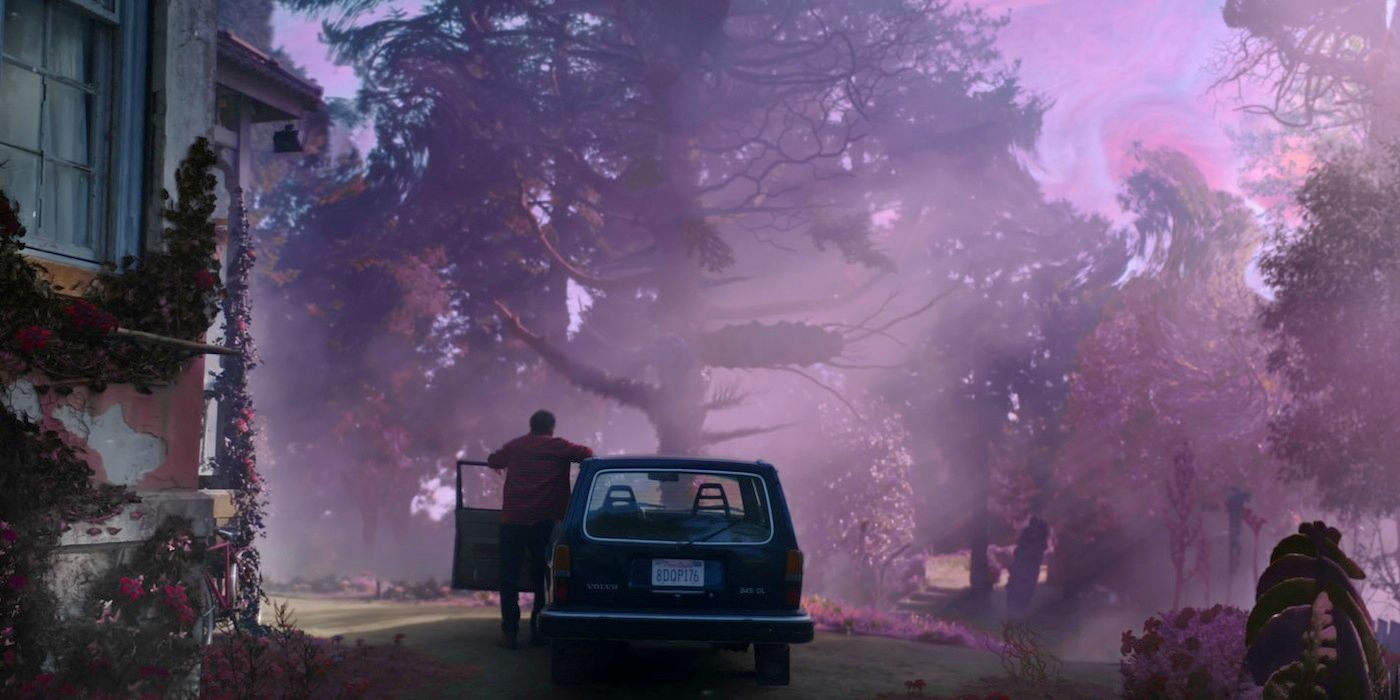Richard Stanley’s Color Out of Space has quickly become one of 2020’s most exciting horror films and it’s one of the better theatrical adaptations of H.P. Lovecraft’s works.
H.P. Lovecraft is a master of surreal and cosmic horror, but his stories are quite often difficult to adapt in a live-action sense. Not only is he an author that can leave plenty up to the imagination, but he also deals with fantastical entities that are often designed to defy convention and break the mind. There have been some successful Lovecraft adaptations, but they’re few and far between, and Stanley’s Color Out of Space is easily one of the best to ever be done.
Color Out of Space is a remarkably simple story that looks at a simple family who relocate to the country. Life gets much more interesting for the Gardner family once a meteorite lands in their front lawn and it soon starts to infect everything on their property, the Gardners included. Nicolas Cage headlines the cast as Nathan Gardner and what unfolds is a terrifying and tragic story of a family that literally crumbles apart as a result of the otherworldly elements that accompany the meteorite. Stanley creates a gripping film that really digs into the horror of Lovecraft’s story, but there are a number of major differences between Color Out of Space’s film and Lovecraft’s original short story.
The Gardners Aren’t The Protagonists And It’s Told In Retrospect In Lovecraft’s Story

Perhaps the biggest difference in Lovecraft’s story is structurally how it’s presented. The surveyor character (Elliot Knight’s Ward Phillips in the film) is the protagonist, rather than the Gardners, and he experiences the story of the family’s downfall secondhand through the Gardners’ hermit-like neighbor, Ammi Pierce (Tommy Chong’s Ezra in the film). The Gardners and their property still experience the same dissolution, but the story involves more of the town as they notice what’s wrong with the family. It’s told about them as the community fills in the blanks between their appearances, whereas Stanley’s film makes the Gardners the focus and never gets away from them. This charts their decay from afar. Additionally, much more time is spent on both the university performing tests on the meteorite as well autopsies on the Gardner children, all of which conjure unbelievable results that defy the laws of the planet.
The other major difference present is the makeup of the Gardner family. In Lovecraft’s story there are three boys in the family, but Stanley’s film gives them a daughter, Lavinia, who has a major fascination with witchcraft, none of which is present in the original text. The entire Gardner family is overtaken with the alien “Color” in both versions, but Lovecraft’s story emphasizes the madness, whereas the film really gets creative and takes a whole body horror route to the story. Stanley adds a ton to Lovecraft’s ideas that actually improve upon the source material and make this alien terror even more frightening. The relatively “restrained” nature of Lovecraft’s story helps add a whole new level of appreciation to just where Stanley’s Color Out of Space ultimately goes.




